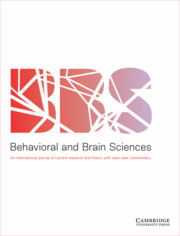Article contents
Grandparental investment: Past, present, and future
Published online by Cambridge University Press: 09 April 2010
Abstract
What motivates grandparents to their altruism? We review answers from evolutionary theory, sociology, and economics. Sometimes in direct conflict with each other, these accounts of grandparental investment exist side-by-side, with little or no theoretical integration. They all account for some of the data, and none account for all of it. We call for a more comprehensive theoretical framework of grandparental investment that addresses its proximate and ultimate causes, and its variability due to lineage, values, norms, institutions (e.g., inheritance laws), and social welfare regimes. This framework needs to take into account that the demographic shift to low fecundity and mortality in economically developed countries has profoundly altered basic parameters of grandparental investment. We then turn to the possible impact of grandparental acts of altruism, and examine whether benefits of grandparental care in industrialized societies may manifest in terms of less tangible dimensions, such as the grandchildren's cognitive and verbal ability, mental health, and well-being. Although grandparents in industrialized societies continue to invest substantial amounts of time and money in their grandchildren, we find a paucity of studies investigating the influence that this investment has on grandchildren in low-risk family contexts. Under circumstances of duress – for example, teenage pregnancy or maternal depression – there is converging evidence that grandparents can provide support that helps to safeguard their children and grandchildren against adverse risks. We conclude by discussing the role that grandparents could play in what has been referred to as Europe's demographic suicide.
Keywords
- Type
- Target Article
- Information
- Copyright
- Copyright © Cambridge University Press 2010
References
- 281
- Cited by


